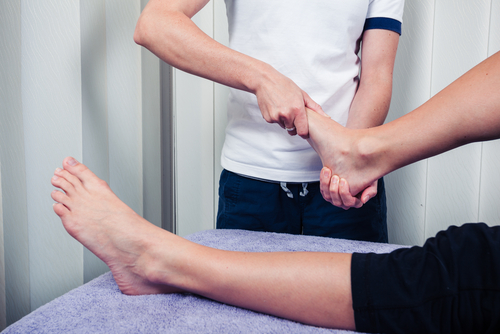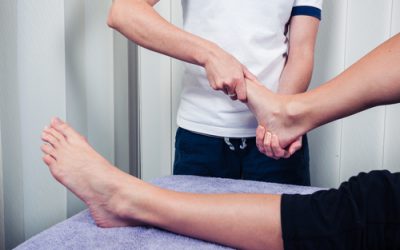Foot and Ankle Pain
Foot and ankle pain is one of the most persistent types of pain you can experience. Your feet are your foundation and support your entire body weight. If there is pain in your foot or ankles, it can affect the alignment of your whole body. Taking care of your foundation will help keep you mobile and moving so that you can maintain a high quality of life.
What are the risk factors for foot and ankle pain?
The repetitive stress put on the feet of runners, hikers and those on their feet for long periods of time creates an elevated risk for developing:
- Shin splints
- Achilles tendonitis
- Ankle sprains
- Plantar fasciitis
Some conditions have a genetic component that patients can’t help. Heel spurs can develop on almost anyone, and these small spurs that dig into the Achilles tendon can make walking a difficult and painful chore. Arthritis can also cause the toes to curl and shift, causing pain throughout the entire foot.
What can I do to treat foot and ankle pain myself?
For most foot and ankle sprains and strains, utilizing the RICE (rest, ice, compression, elevation) method is a great program to reduce pain and swelling, and to promote healing. For sufferers of plantar fasciitis, bone spurs and shin splints, consider investing in a set of orthotic shoes or including a lift in your current shoes to help provide relief from foot and ankle pain. For runners, remembering to replace your running shoes every 300–500 miles is a great idea to keep feet fresher and limit the pain of shin splints and Achilles tendonitis. For serious runners, this could be as quick as six months before the shoes need to be replaced.

Physical therapy treatment options for foot and ankle pain
The ultimate goal of physical therapy is to regain as much strength, flexibility and range of motion as possible. There are three primary exercise positions of the foot to achieve this goal. The first is dorsiflexion in which you push your heel forward while your toes reach for the sky. It is important to not point the toes, as the work comes from the heel and the Achilles tendon.
The second is plantarflexion where the knee is kept straight with the toes pointed out straight ahead. This position strengthens the muscles in the foot. The last position is eversion/inversion where the toes remain pointed and the ankle is rotated away from the midline of the body in eversion and toward the midline with inversion. This helps strengthen the ankle and increase its rotational range of motion.
Our feet and ankles are truly the foundation of our bodies. Taking care of our foundation allows us to stay mobile and enjoy a good quality of life. When foot or ankle pain develops, it is important to have it looked at immediately in order to prevent further damage and keep you from doing the things you love.
The knowledgeable physical therapists at Back in Motion Physical Therapy want to keep you on your feet and keep you moving. If you or a loved one is struggling with foot or ankle pain, make an appointment with one of our patient coordinators today to set up your initial appointment to go over which treatment option may work for you.
We have center and branch locations in Auburn, Bangor, Belfast, Brewer, Dover-Foxcroft, Ellsworth, Gorham, Hermon, Newport, Old Town, Portland, Saco, Sanford, Scarborough, South Portland, and Waterville.
Therapy treatment options for foot and ankle pain
Ankle pain causes every runner should watch out for
Dealing with ankle pain isn’t something that any runner wants to deal with. Unfortunately, far too many runners might be dealing with issues that cause ankle pain. Injuring yourself while running is something that approximately half of regular runners deal with...
Two treatment options for ankle pain after running
Trying to increase your running mileage. Training for a 5K. Running regularly with a friend or family member. Ankle pain after running can make every one of these goals harder to achieve. However, you are far from the only person experiencing ankle pain. A...
What happens if you don’t have physical therapy after ankle surgery?
A severe ankle fracture. Torn ankle ligaments. An ankle joint with end-stage osteoarthritis. People with any of these issues are likely to seek relief from ankle surgery. Ankle surgery isn’t as common as total hip or knee replacements, but it is used to help...



